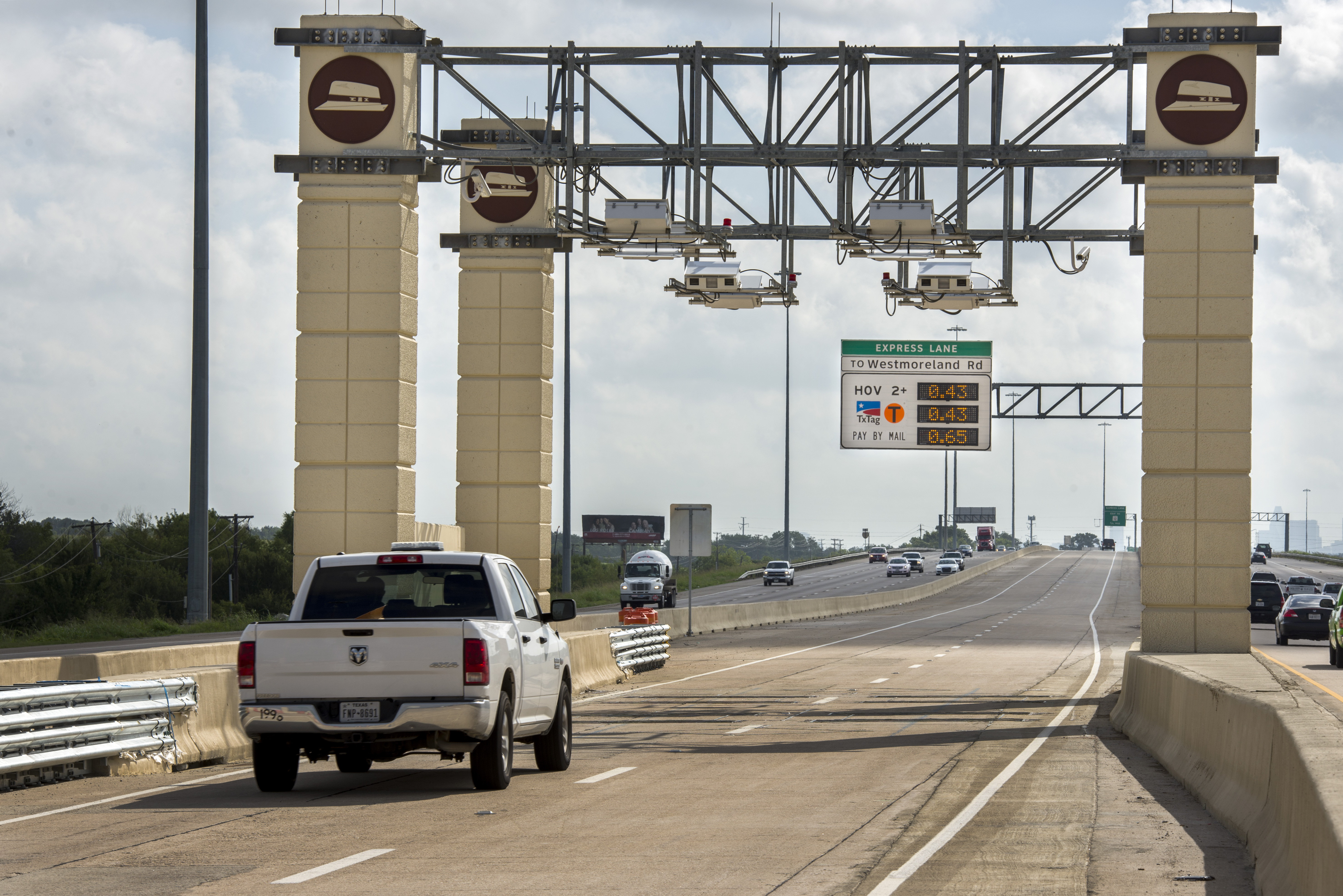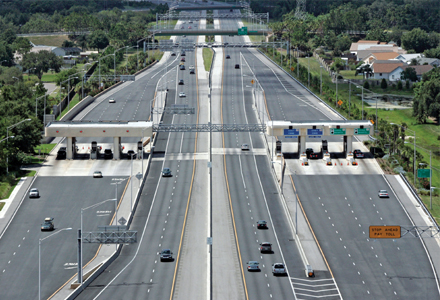Teri England, Diamond Consulting Services, details the construction of construction of a world first - reversible express lanes with cashless multi-lane ORT - on the Tampa Hillsborough Expressway

The bridge's curved construction is designed to minimalise its visual impact
Teri England,
Over the preceding two decades, continued population growth and ever-increasing traffic had resulted in severe congestion for thousands of daily Expressway commuters. The commute, at peak times, on a 10-mile stretch of Expressway from downtown Tampa to Brandon took as much as 40 minutes. A resolution to this congestion was needed.
A greenfield project or the acquisition of new land were not options due to environmental issues, so in order to relieve peak-hour congestion and improve access the Authority decided to build 10 miles of reversible express toll lanes between Interstate 75 and downtown Tampa. Most of the project was constructed as an elegant, segmental bridge using only six feet (2m) of space within the existing Expressway median. The aim of the project design was to dramatically reduce impacts on the community and environment, as well as provide cost savings.
The reversible express lanes design stemmed from the results of comprehensive surveys to determine the behavioural pattern of Expressway users: where they went, how they got there and when they travelled. The Expressway Authority received over 2,800 returns from these surveys and in doing so formed a clear picture of commuter behaviour. The results told that 10 lanes of capacity were required at peak times to cover the road users' needs. However, 10 lanes weren't needed in both directions, due to the nature of exiting traffic and their time of travel. This led to the concept of reversible lanes - a non-stop Expressway from Brandon to downtown Tampa.
The technologies deployed
The resulting project was a technological innovation which included the first reversible, cashless, three-lane ORT system, a unique approach to video toll collection for customers without transponders, and a centralised Traffic Management Centre (TMC).In addition to providing greatly improved daily service to Expressway customers, the Expressway lanes also incorporate features which allow for the testing of new concepts in highway safety and operations. The internal spaces of the bridge are 8ft tall and the weatherproof hollow core contains the communication, utility, fibre optic and intelligent transportation systems equipment used for control of the reversible lanes.
There was a further non-technical design constraint: to limit the impact of such a large concrete construction on the surrounding landscape. The bridge's serpentine curves and naves mean most of the time views are of only one side, belying its true vastness.
Another unique feature of this project was the ability for the entire erection process to be carried out above ground in live traffic - including construction of the pillars. The bridge itself was used to carry materials to the build locations, thereby reducing road closures
AVC in the reversible lanes
Utilising ORT with no toll booths or plazas eliminates the risks associated with large volumes of traffic slowing down to pay the toll. However, for an ORT system to meet its necessary accuracy levels the Automatic Vehicle Classification (AVC) aspect becomes a critical function within the bigger picture.The installation was for three running lanes, each 12 feet wide, and two 10 feet wide shoulders, with a three-loop array in each running lane. The loop arrays were placed into a special fabric-reinforced concrete pavement located under the ORT gantry on the approach to the bridge. Prior to the AVC installation, the ITP and system integrator put considerable effort into ensuring that the loop arrays' locations were the best for optimisation of the product's accuracy levels. The project also benefited from the use of PVC conduit for the feeders (one of the first projects to use the material) which offers better loop wire isolation; it made a noticeable difference in set-up time and obviated the need to cut quite so many channels across the roadway as might otherwise have been the case.
According to Vance Williams of Quixote Traffic, the biggest challenge on this project was implementation of the unique software features involved. Ahead of installation, therefore, considerable in-house testing was carried out in order to achieve smooth project integration. Although the physical hardware was standard in terms of a tolling installation, developing the reversible capability of the software took some deliberation in the software coding department. Understanding how the AVC system would operate in a forward direction in the morning and then reverse the whole process in the afternoon wasn't as simple as flipping a switch and throwing everything into reverse. It was necessary to enable the software to shut down and restart in reverse mode. Although two sets of hardware weren't required, two software configuration files were a necessity, one for each direction.
Rules needed to be defined for how Idris reported or responded, as well as what was actually reported. As an example, in a standard configuration Idris knows the direction of travel a vehicle is moving in but should the direction be in reverse Idris reports this fact as an alarm. However, for Tampa Idris had to determine which direction a vehicle was travelling - forward or reverse, and whether it was the correct direction for the time of day. Once the configuration of rule files and software code was achieved, the remainder of the installation was a straightforward build.
There is a time element in all this too, as the purpose of the Expressway is to keep traffic moving. Long periods of lane closure for reversing the lanes would have defeated the objective. This was where using Idris as the AVC provided not only accuracy but also time savings. The whole Expressway is reset and restarted in reverse mode - effectively a reboot of the system. This means there is no hardware change-over; the process is carried out remotely from the TMC which means the Expressway is operational for about 23 hours a day. Overall it takes just 30 minutes to complete a change of direction. The physical change can actually be done in 15 minutes but the extra time is taken for a traffic engineer to drive the route and visually check and re-check that everything is clear and all is well.
Safety is always the key to any project and the Expressway is no exception to this rule. The preventative mechanisms for vehicles entering the lanes in the wrong direction include 30 warning gates, five impenetrable barriers, more than 40 variable message signs and 25 CCTV cameras. All of these are used to support the traffic managers who oversee the change of direction for the lanes. All of the Expressway's ITS operations are controlled from the TMC where the system delivers operational information to Expressway customers and ensures no vehicle may enter the reversible lanes in the wrong direction. In addition, feedback is also provided to the TMC operators for the management of incidents or accidents on the roadway. Occasionally, the warning gates have been hit by a vehicle trying to access the Expressway from the wrong direction but the barriers are impossible for a vehicle to actually drive through.











